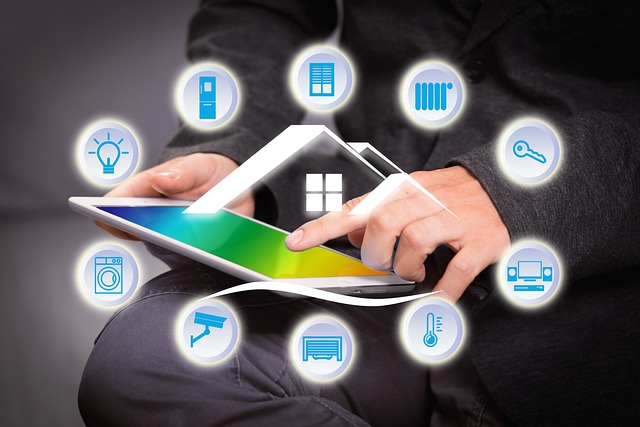
Introduction
Keeping your home safe and secure has never been more critical, and remote home monitoring systems are revolutionizing the way we protect our spaces. Combining cutting-edge technology with user-friendly interfaces, these systems allow homeowners to monitor and control their homes from virtually anywhere. Let’s dive into the essentials of remote home monitoring and how it can provide peace of mind while saving you time and money.
Understanding Remote Home Monitoring

What is Remote Home Monitoring?
Remote home monitoring is a smart home solution that enables homeowners to oversee and control their property using connected devices and the internet. These systems often include components like surveillance cameras, motion detectors, and smart locks, all managed through mobile apps or web interfaces.
Common Applications Include:
- Checking live camera feeds while away from home.
- Receiving alerts for unusual activity.
- Controlling smart home devices like lights and thermostats.
Benefits of Remote Home Monitoring
- Increased Home Security:
Remote monitoring systems provide constant oversight, deterring potential intruders and notifying homeowners of suspicious activities. - Real-Time Access and Control:
Whether you’re at work or on vacation, you can view live feeds, adjust settings, and even communicate through intercom features. - Energy and Cost Savings:
By integrating with smart devices, these systems allow you to optimize energy use, turning off lights or adjusting thermostats remotely.

Key Features of Remote Home Monitoring Systems
Video Surveillance and Live Feeds
The cornerstone of any remote monitoring system is high-quality video surveillance.
- High-Resolution Cameras: These capture clear footage, even in low-light conditions.
- Real-Time Video Access: Homeowners can log into the app and view live feeds from any connected camera.
Motion Detectors and Alerts
Advanced motion sensors are crucial for detecting unauthorized activity.
- Customizable Sensitivity: Adjust sensors to focus on specific areas or types of motion.
- Instant Notifications: Receive alerts on your phone for any detected movement.
Smart Device Integration
Modern systems integrate seamlessly with other smart home devices.
- Voice Assistant Compatibility: Manage security through Alexa or Google Assistant.
- Centralized App Control: Control multiple devices from a single platform.
Cloud Storage and Data Backup
Many systems offer cloud storage for recorded footage.
- Secure Access: Store and retrieve video files from the cloud without worrying about physical storage limitations.
- Backup Options: Ensures important footage isn’t lost due to hardware failure.

Popular Remote Home Monitoring Systems
Ring
Features:
- User-friendly interface and app.
- Affordable pricing with optional subscription plans.
Ideal For:
Homeowners looking for straightforward and reliable surveillance solutions.
Arlo
Features:
- High-resolution cameras with night vision.
- Advanced AI for distinguishing between people, pets, and objects.
Subscription Options:
Free basic plans with paid tiers for additional storage and features.
Google Nest
Features:
- Integration with the Google Home ecosystem.
- Smart learning capabilities for enhanced automation.
Flexibility:
Perfect for users already invested in Google’s smart home devices.

Setting Up a Remote Home Monitoring System
DIY vs. Professional Installation
- DIY: Ideal for tech-savvy users, offering flexibility and cost savings.
- Professional Installation: Ensures optimal device placement and configuration but comes at an additional cost.
Placement of Devices
Strategic placement is key to maximizing coverage:
- Cameras: Position at entry points, driveways, and common areas.
- Motion Sensors: Install in high-traffic zones or near vulnerable entry points.

Data Security in Remote Home Monitoring
Encryption and Cybersecurity Measures
Reputable systems employ strong encryption protocols to protect user data, including:
- End-to-end encryption for video streams.
- Two-factor authentication for account security.
Regular Software Updates and Maintenance
Manufacturers frequently release updates to address security vulnerabilities and improve system functionality. Always keep your devices and apps up-to-date.

Costs and ROI of Remote Home Monitoring
Initial Investment and Installation Costs
Remote home monitoring systems range from budget-friendly DIY kits to premium setups with professional installation.
Price Range:
- Entry-level systems: $100–$300
- Advanced systems: $500 and above
Long-Term Savings and Value
- Insurance Premiums: Many insurers offer discounts for homes equipped with monitoring systems.
- Energy Efficiency: Smart integrations help reduce utility bills, providing additional savings over time.
Tips for Effective Remote Home Monitoring
Setting Up User Permissions
Grant access to family members or trusted individuals while restricting sensitive settings. This ensures everyone can use the system without compromising security.
Regular System Testing and Maintenance
Schedule periodic tests to ensure:
- Cameras and sensors are functioning correctly.
- Firmware and software are updated to the latest versions.

Conclusion
Remote home monitoring is no longer a luxury—it’s a necessity for modern living. By combining robust security features with smart technology, these systems offer unparalleled convenience and peace of mind. Whether you’re protecting a small apartment or a sprawling estate, remote home monitoring can adapt to your needs and ensure your home remains safe and connected.
FAQs
- What is the primary purpose of a remote home monitoring system?
To enhance security, provide real-time surveillance, and enable remote control of home devices. - Can remote home monitoring systems work without Wi-Fi?
While most systems rely on Wi-Fi, some offer offline capabilities using cellular data. - How do remote monitoring systems ensure data security?
By using encryption, two-factor authentication, and secure cloud storage for sensitive information. - Are there cost-effective options for remote home monitoring?
Yes, brands like Ring and Wyze offer affordable solutions with essential features. - Can remote systems integrate with existing smart home devices?
Absolutely! Most modern systems are compatible with smart assistants and other IoT devices.

